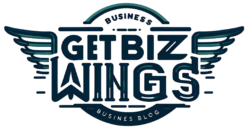In today’s digital age, brick-and-mortar stores face numerous challenges as online shopping continues to gain popularity. However, with the right strategies and adaptations, these physical stores can still thrive and remain relevant in the changing retail landscape.
1. Enhancing the In-Store Experience
One key advantage that brick-and-mortar stores have over online retailers is the ability to provide a unique and immersive shopping experience. By creating an inviting atmosphere, offering exceptional customer service, and implementing interactive displays, physical stores can entice customers to visit and make purchases. For example, stores can incorporate augmented reality (AR) or virtual reality (VR) technologies to enhance the shopping experience, allowing customers to try products virtually before buying.
2. Embracing Omnichannel Retailing

Successful brick-and-mortar stores understand the importance of integrating their online and offline channels. By offering a seamless shopping experience across multiple platforms, such as a user-friendly website, mobile app, and social media presence, retailers can leverage the benefits of both the physical and digital realms. This approach allows customers to research products online, visit the store to see and touch the items, and then make a purchase either in-store or online.
3. Personalization and Customization
In an era where consumers crave personalized experiences, brick-and-mortar stores can capitalize on this by offering tailored product recommendations and customization options. By collecting customer data and analyzing shopping patterns, stores can provide personalized offers and suggestions, creating a sense of exclusivity and loyalty. Additionally, offering customization services, such as engraving or monogramming, adds value to the shopping experience and encourages customers to choose physical stores over online alternatives.
4. Community Engagement and Events
Brick-and-mortar stores can foster a sense of community by hosting interactive events and engaging with their local customer base. This approach creates opportunities for customers to interact with the brand, meet like-minded individuals, and partake in exclusive experiences. Whether it’s hosting workshops, product launch parties, or supporting local causes, these initiatives help build a loyal customer base and differentiate physical stores from their online counterparts.
5. Store-as-a-Showroom
Rather than viewing online shopping as a threat, brick-and-mortar stores can embrace it by transforming themselves into showrooms. By displaying a limited range of products and offering the option for customers to order online, stores can reduce inventory costs while still providing a physical space for customers to explore and try out products. This approach not only saves on operational expenses but also allows stores to adapt quickly to changing consumer demands.
6. Staff Training and Expertise

Well-trained and knowledgeable staff can greatly enhance the brick-and-mortar shopping experience. By investing in employee training programs, retailers can ensure that their staff possesses in-depth product knowledge, excellent customer service skills, and the ability to provide expert advice. This expertise becomes a valuable resource for customers who seek guidance and personalized recommendations, fostering trust and loyalty towards the store.
While the rise of online shopping has undoubtedly impacted brick-and-mortar stores, there are numerous strategies that physical retailers can implement to adapt and thrive in the changing retail landscape. By enhancing the in-store experience, embracing omnichannel retailing, personalizing offerings, engaging with the community, leveraging the showroom concept, and investing in staff training, brick-and-mortar stores can continue to play a vital role in the future of retail.

